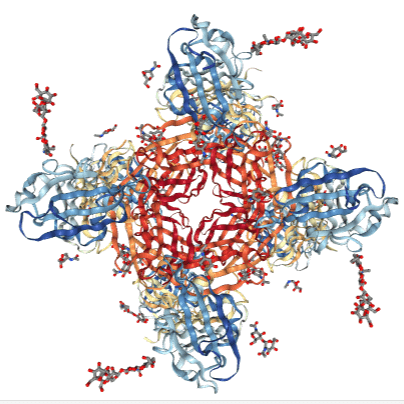All products and services are For Research Use Only and CANNOT be used in the treatment or diagnosis of disease.
The Urokinase receptor, also known as uPA receptor or uPAR or CD87 (Cluster of Differentiation 87), is multidomain glycoprotein tethered to the cell membrane with a glycosylphosphotidylinositol (GPI) anchor. uPAR plays a central role in cell surface-associated plasminogen activation, entailing proteolytic degradation of the extracellular matrix surrounding the cells. The prognostic significance of uPAR in non-small cell lung cancer is apparent for patients with the histologic subtype of squamous cell carcinoma, where high levels of uPAR is an independent marker of prognosis, as evaluated in tumour extracts. Like in non-small cell lung cancer, uPAR domain I present in high concentrations in preoperative plasma independently predicts poor survival of patients with ovarian cancer.
 Associated Disease
Associated Disease
 Loading...
Loading...
| CAT | Product Name | Target Species | Antibody Clone | Antibody Host | Receptor Construction | Vector Type | Targeting Cell Type | CAR Vector Type | Inquiry & Datasheet |
| CAR-LC265 | Anti-CD87 h(41BB-CD3ζ) CAR, pCDCAR1 | Human | Mouse | scFv-41BB-CD3ζ-IL12 | Lentiviral | T cell |
 NEWSLETTER
NEWSLETTER
The latest newsletter to introduce the latest breaking information, our site updates, field and other scientific news, important events, and insights from industry leaders
LEARN MORE NEWSLETTER NEW SOLUTION
NEW SOLUTION
CellRapeutics™ In Vivo Cell Engineering: One-stop in vivo T/B/NK cell and macrophage engineering services covering vectors construction to function verification.
LEARN MORE SOLUTION NOVEL TECHNOLOGY
NOVEL TECHNOLOGY
Silence™ CAR-T Cell: A novel platform to enhance CAR-T cell immunotherapy by combining RNAi technology to suppress genes that may impede CAR functionality.
LEARN MORE NOVEL TECHNOLOGY NEW SOLUTION
NEW SOLUTION
Canine CAR-T Therapy Development: From early target discovery, CAR design and construction, cell culture, and transfection, to in vitro and in vivo function validation.
LEARN MORE SOLUTION

